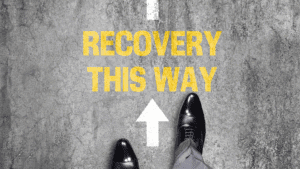How do I stop a panic attack? This is one of the most common questions people bring to me in coaching sessions. Panic feels like your body has turned against you, but the truth is, your brain is trying—albeit clumsily—to keep you alive. Panic is not a sign of weakness, and it’s not random. Neuroscience shows us that panic is a misfiring of your brain’s alarm system. Once you understand how and why this happens, you can begin to regain control and retrain your nervous system to respond in a different way.
Why Panic Feels Like Imminent Danger
When people ask me how do I stop a panic attack, I first explain why it feels so catastrophic. The human brain evolved to prioritize survival. When your ancestors saw a threat—a predator in the wild, a sudden loud sound, or an approaching stranger—the amygdala instantly activated the fight-or-flight response. Stress hormones like adrenaline and cortisol surged, your heart rate increased, your breathing quickened, and blood was redirected to your muscles to help you escape. Understanding the signs of a panic attack—such as racing heart, chest tightness, dizziness, or a sense of unreality—helps you recognize that these sensations are your brain’s alarm system, not evidence of imminent danger.
During a panic attack, this same system gets triggered without an actual threat. Your brain misinterprets internal sensations—like a skipped heartbeat, a tight chest, or racing thoughts—as signs of danger. The amygdala hijacks control, overriding the slower, rational prefrontal cortex. That’s why even when you “know” you’re safe, your body feels like it’s in mortal danger.
The Brain Chemistry Behind Panic
From a neuroscientific perspective, panic is a cascade of miscommunication between brain regions. The locus coeruleus, which regulates norepinephrine (the neurotransmitter of arousal), becomes hyperactive. The hippocampus, which generally helps provide context, may fail to reassure the brain that you’re not actually under threat. Meanwhile, the insula, which monitors internal bodily sensations, amplifies your awareness of every heartbeat and breath. Neuroscience shows that anxiety fear and panic all share overlapping brain circuits, but panic attacks occur when these pathways become hyperactive and override the rational prefrontal cortex.
This cocktail floods your system with adrenaline. You feel dizzy because blood flow to your head shifts. You feel short of breath because your breathing is shallow and rapid. You may feel detached or unreal because blood flow is redirected away from the prefrontal cortex, which can dull rational thought. All of this reinforces the cycle: your body feels out of control, your brain interprets that as proof of danger, and the panic escalates.
Why Panic Spirals Out of Control
So, how do I stop a panic attack once it starts? The answer lies in breaking the spiral. Panic attacks are self-reinforcing loops. You feel a physical symptom, your brain interprets it as danger, your body responds with more adrenaline, and your brain doubles down. Without intervention, the spiral can last anywhere from a few minutes to several hours.
Evolutionarily, this makes sense. It was safer to overreact to a false alarm than to underreact to a real predator. But in today’s world, where the “predator” is often just a stressful thought, this overactive system becomes maladaptive. The good news is that because panic is a brain-body loop, you can interrupt it at multiple points.

Using the Body to Reassure the Brain
One of the most effective neuroscience-based methods for stopping a panic attack is to use the body to send new signals of safety to the brain. Slow, diaphragmatic breathing activates the vagus nerve, stimulating the parasympathetic nervous system—the body’s natural brake on panic. Even just lengthening the exhale can shift the balance from sympathetic activation (fight-or-flight) to parasympathetic dominance (rest-and-digest).
Progressive muscle relaxation is another powerful tool. By systematically tensing and releasing muscle groups, you counteract the tension panic creates. This sends feedback to the brain that the threat has passed, disrupting the spiral.
These aren’t just tricks—they’re neurological recalibrations. You are literally teaching your nervous system that what feels like mortal danger is not life-threatening.
Rewiring the Brain’s Interpretation
Another essential part of stopping panic lies in retraining the brain to interpret bodily sensations differently. When someone asks me how to stop a panic attack, I emphasize that awareness is key. The insula magnifies internal sensations, but the prefrontal cortex can learn to reinterpret them. A racing heart can mean danger—or it can mean excitement, exertion, or just caffeine.
One technique I often teach clients is cognitive labeling. The moment panic sensations arise, naming them—“my heart is racing, but I’m safe”—activates the prefrontal cortex, softening the amygdala’s grip. This is not about denial; it’s about giving the brain accurate context.
A Real-Life Client Story
A client of mine, whom I’ll call Daniel, once came to me desperate to know how do I stop a panic attack. He had begun experiencing them in meetings, which made him fear embarrassment and led him to avoid work altogether. We worked together to map his neural triggers. His panic always started with a flutter in his chest, which his brain misread as impending collapse.
Through neuroscience-based coaching, I taught Daniel how to slow his breathing, focus on the exhale, and label his sensations. Over time, he learned that the flutter was not a threat, but a benign signal amplified by stress. Within weeks, his panic attacks decreased in intensity and frequency. He no longer feared meetings because he knew how to intervene before the situation spiraled out of control.
This transformation wasn’t magic—it was a result of neuroplasticity. By repeatedly responding differently, Daniel literally rewired his brain’s pathways.
The Role of Neuroplasticity in Recovery

How do I stop a panic attack permanently? The answer is by leveraging neuroplasticity—the brain’s ability to change through experience. Each time you interrupt a panic spiral with calming practices, you weaken the old threat circuits and strengthen new, safe pathways. The amygdala learns that a racing heart does not always mean danger. The prefrontal cortex becomes more adept at staying online under stress.
This is why practice matters. Just as learning a new language or instrument requires repetition, retraining your brain does as well. The more often you use body-based and cognitive tools, the faster your nervous system learns a new pattern.
Evolutionary Roots of Panic
It’s essential to remember that panic exists because it once served a purpose. In our evolutionary past, the ability to react instantly to danger kept us alive. Those who hesitated often didn’t survive. The problem is that the modern brain can’t always distinguish between external predators and internal sensations.
So when people ask me how do I stop a panic attack, I remind them that their brain is not broken—it’s overprotective. The very system that causes suffering today is the one that ensured our ancestors lived long enough to pass down their genes. Understanding this reframes panic from weakness into a misguided sense of strength for survival.
Practical Tools to Interrupt Panic
There are many neuroscience-based ways to stop a panic spiral, from grounding the senses to activating the parasympathetic nervous system through slow breathing and intentional movement. When clients ask me, “How do I stop a panic attack when it feels unstoppable?” I remind them that panic is not random—it’s a predictable brain-body loop. Because it is a loop, it can also be interrupted. These tools are not distractions or quick fixes; they are neuroscience-based interventions that retrain your nervous system to respond differently over time.
Grounding through the senses
During a panic spiral, the amygdala hijacks attention, making your world shrink to catastrophic thoughts. Grounding re-engages the prefrontal cortex. One of my favorite tools is the 5-4-3-2-1 method: five things you see, four things you feel, three things you hear, two things you smell, and one thing you taste. By anchoring the brain to sensory data, you remind your nervous system that you are safe in the present moment. This exercise provides the amygdala with new information to process, thereby shifting its focus away from imagined threats.
Paced breathing
“How do I stop a panic attack when I feel like I can’t breathe?” This is one of the most common questions I hear. The answer lies in retraining the breath. Shallow, rapid breathing fuels panic by reinforcing the fight-or-flight state. Inhaling for four counts and exhaling for six activates the vagus nerve, which signals the parasympathetic nervous system to take control. Over time, this practice conditions the body to associate slow exhalation with safety, reducing the intensity of future attacks.
Intentional movement
When adrenaline floods the bloodstream, your body prepares for action. If you stay still, the excess energy amplifies sensations of terror. Walking, stretching, or even shaking out your arms helps metabolize adrenaline and recalibrate your system. Clients often ask me how do I stop a panic attack without drawing attention to myself—small, subtle movements like pressing your feet into the floor or clenching and releasing fists are discreet but powerful interventions.
Visualization and memory reconsolidation
The brain cannot always distinguish between vividly imagined experiences and real ones. When panic rises, picturing a safe, calming place—down to the texture of the air, the colors, and the sounds—activates the same neural circuits as being there. This isn’t escapism; it’s a way to rewire memory networks. Over time, your brain learns to associate sensations of safety with the early stages of panic, preventing the spiral from escalating.
Name it to tame it
Another neuroscience-backed tool is labeling what is happening. Saying to yourself, “This is a panic attack, not a heart attack,” activates the prefrontal cortex, calming the amygdala. Many of my clients are astonished at how effective this simple practice is. By naming the experience, you shift from raw fear into mindful awareness, which restores some measure of control.
Each of these strategies not only interrupts panic in the moment but also contributes to long-term neuroplasticity. The more often you use them, the more your brain rewires itself to recognize panic as survivable—and eventually preventable.
Healing Beyond the Panic Attack

Stopping panic in the moment is critical, but most clients eventually ask me a bigger question: “How do I stop a panic attack from happening again?” The answer lies in training your nervous system to be less reactive in the first place.
Panic is not your enemy. It is an overactive alarm system. Instead of trying to silence it, neuroscience teaches us to recalibrate it. Meditation strengthens the prefrontal cortex, giving you greater control over runaway fear signals. Consistent physical exercise increases GABA, the brain’s primary inhibitory neurotransmitter, which helps prevent overactivation. Adequate sleep balances stress hormones, making your nervous system more resilient. And meaningful social connections boost oxytocin, which counters the isolating effects of anxiety.
When clients adopt these practices, they experience fewer triggers, shorter episodes, and increased confidence. Recovering from panic doesn’t mean eliminating the system—it means teaching it discernment. You want an alarm that activates when it should, but not every time your body skips a beat. Neuroscience-based coaching builds this balance, equipping you with tools that work both in the heat of the moment and in the long-term journey of recovery.
When Panic Becomes Transformation
Over the years, I’ve had countless clients come to me with the urgent plea: “How do I stop a panic attack? I want my old life back.” What they don’t realize in the beginning is that panic, as terrifying as it feels, can become the gateway to profound transformation.
Neuroscience reveals that each panic episode creates a window of plasticity—an opportunity to rewire the circuits that triggered it. With the proper guidance, this vulnerable state can become fertile ground for growth. Clients who once saw panic as a life sentence begin to see it as a wake-up call. They develop emotional literacy, resilience, and a new, more positive relationship with their bodies.
One client told me that before she learned how to work with her brain, she lived in constant fear of the next panic attack. After coaching, she described herself as calmer and more powerful than ever—not because panic disappeared, but because she had learned to master it. Panic no longer defined her. It had transformed her.
This is the ultimate answer to how do I stop a panic attack. It’s not only about ending the episode in the moment—it’s about using neuroscience to reclaim your authority, rewire your nervous system, and create a stronger, freer version of yourself.
u003cstrongu003eHow do I stop a panic attack when I am angry?u003c/strongu003e
Anger and panic both activate the amygdala, flooding your body with adrenaline. The key is to slow your breath and lengthen your exhale. This engages the vagus nerve, which calms the nervous system and helps your brain shift from a state of threat to one of control. By combining grounding u003ca href=u0022https://mindlabneuroscience.com/identify-challenge-cognitive-distortions/u0022 target=u0022_blanku0022 rel=u0022noreferrer noopeneru0022 data-schema-attribute=u0022aboutu0022u003etechniques with mindfulu003c/au003e labeling—“I feel anger rising, but I am safe”—you redirect energy away from panic and back toward a state of regulation.
u003cstrongu003eHow do I stop a panic attack when I am intoxicated?u003c/strongu003e
Alcohol and substances disrupt the balance of neurotransmitters like GABA and glutamate, which typically stabilize mood. This imbalance can intensify panic. The best strategy is body-based: focus on steady, paced breathing and grounding exercises. Tell yourself, “This panic is intensified by intoxication, but it will pass.” Rehydrating and moving into a calmer environment can also help your nervous system reset.
u003cstrongu003eHow do I stop a panic attack when I am trying to fall asleep?u003c/strongu003e
Nighttime panic often arises when the brain is free from external distractions. Racing thoughts activate the default mode network, fueling anxiety. To interrupt this, use grounding techniques in bed, like progressive muscle u003ca href=u0022https://mindlabneuroscience.com/relaxing-before-conversations/u0022 target=u0022_blanku0022 rel=u0022noreferrer noopeneru0022 data-schema-attribute=u0022aboutu0022u003erelaxation or gently pressingu003c/au003e your palms together. Slow your breath and repeat a reassuring phrase: “This is my body’s alarm, but I am safe to rest.” The parasympathetic nervous system will begin to counter the adrenaline.
u003cstrongu003eHow do I stop a panic attack when I am about to speak in public?u003c/strongu003e
Public speaking panic is one of the most common triggers I see. The brain misinterprets the social spotlight as a threat of rejection. To stop a panic attack in this context, prepare your nervous system beforehand with slow breathing and visualization of success. During the moment, focus on your exhale, plant your feet firmly, and remind yourself: “My body feels like it’s in danger, but my brain knows this is not life-threatening.” This re-engages the prefrontal cortex, restoring clarity.
u003cstrongu003eHow do I stop a panic attack when I am driving?u003c/strongu003e
Panic behind the wheel is frightening because the stakes feel high. First, pull over safely if possible. Focus on lengthening your exhale, which signals safety to your brain. Place your hands firmly on the steering wheel or thighs to reconnect with physical reality. Telling yourself, “This is a panic attack, not a car emergency,” helps reframe the sensations and keep you in control.
u003cstrongu003eHow do I stop a panic attack at a job interview?u003c/strongu003e
Job interviews trigger the brain’s social threat system because being evaluated feels like a threat to one’s own survival. The amygdala reacts as though your livelihood is on the line. To stop a panic attack in this moment, focus on slowing your exhale before you enter the room and ground yourself with physical cues—feet flat on the floor, shoulders relaxed. Reframe your thoughts: “My body feels under threat, but my brain knows this is just a conversation.” This slight u003ca href=u0022https://mindlabneuroscience.com/breaking-free-from-polarized-thinking/u0022 target=u0022_blanku0022 rel=u0022noreferrer noopeneru0022 data-schema-attribute=u0022aboutu0022u003ecognitive shift can keep the prefrontal cortexu003c/au003e online and allow your skills to shine through.
u003cstrongu003eHow do I stop a panic attack on a date?u003c/strongu003e
Romantic situations can awaken deep fears of rejection, which activate the same u003ca href=u0022https://mindlabneuroscience.com/mind-body-connection-master-your-health/u0022 target=u0022_blanku0022 rel=u0022noreferrer noopeneru0022 data-schema-attribute=u0022aboutu0022u003ebrain regions as physical painu003c/au003e. If you feel panic on a date, discreet grounding tools are best. Gently press your hands together under the table, focus on your breath, and remind yourself that anxiety is not a reflection of your worth. By saying silently, “This is a panic attack, not danger,” you calm your nervous system and stay present. Many of my clients find that practicing before the date—visualizing safety and connection—primes the brain for success.
u003cstrongu003eHow do I stop a panic attack when meeting new people?u003c/strongu003e
u003ca href=u0022https://mindlabneuroscience.com/overcome-autophobia-neuroscience/u0022 target=u0022_blanku0022 rel=u0022noreferrer noopeneru0022 data-schema-attribute=u0022aboutu0022u003eSocial introductions light up the brain’s fearu003c/au003e of exclusion, especially for those prone to panic. If panic rises, engage in micro-regulation: slow your breathing, u003ca href=u0022https://mindlabneuroscience.com/mastering-first-impressions/u0022 target=u0022_blanku0022 rel=u0022noreferrer noopeneru0022 data-schema-attribute=u0022aboutu0022u003emaintain eye contactu003c/au003e, and shift your attention outward by asking the other person a question. Redirecting focus away from internal sensations helps quiet the insula, which is magnifying your body’s signals. Repeating the phrase, “This is a moment of connection, not a threat,” helps retrain the u003ca href=u0022https://mindlabneuroscience.com/mastering-perspective-change-neuroscience/u0022 target=u0022_blanku0022 rel=u0022noreferrer noopeneru0022 data-schema-attribute=u0022aboutu0022u003ebrain to see socialu003c/au003e situations as safe.
Final Thoughts
If you’ve ever found yourself asking, how do I stop a panic attack?, please know this: your brain is not broken. It is simply overprotective. Neuroscience reveals that panic is your brain’s alarm system misfiring, not a sign of weakness. The same neural pathways that trigger fear can be rewired into circuits of calm, clarity, and control.
I’ve guided countless clients through this transformational process. Many arrived convinced they would be trapped by panic forever—yet through neuroscience-based tools, they reclaimed their confidence and freedom. You can do the same. With practice, your nervous system learns that the sensations of panic are survivable and temporary, not catastrophic.
When people ask me again and again, “how do I stop a panic attack without losing control?”, I remind them that control comes not from resisting panic, but from working with the brain’s natural design. By breathing slowly, grounding yourself in the present, and labeling the sensations accurately, you teach your amygdala that the perceived danger is not real. Over time, these small practices accumulate, reshaping your brain into one that trusts calm over fear.
The next time your brain sounds the alarm, remind yourself: I am not powerless. I am wired for resilience. By working with your biology instead of against it, you can stop panic in its tracks, retrain your pathways, and create a calmer, stronger version of yourself.
So, if you’ve ever wondered, how do I stop a panic attack and reclaim my peace of mind?, the answer is this: by understanding your brain, honoring your body, and embracing the science of healing. When you do, you don’t just end panic—you rise beyond it.
#neuroscience #panicattack #howdoistopapanicattack #emotionalhealing #anxiety #brainhealth #stressrelief #mentalclarity #selfregulation #coaching



